We all know Joseph Campbell’s Hero’s Journey. This narrative structure, also known as the monomyth, has long been a cornerstone of narrative analysis in English classrooms. It’s a useful tool for introducing students to narrative analysis and can be applied to a wide range of stories, from ancient myths to modern blockbusters. While it’s a powerful tool, our over-reliance on this framework might be limiting our students’ understanding of storytelling. As our curricula evolve to include more diverse voices and perspectives, it’s crucial that we expand our approach to narrative structures as well. Let’s explore why we need to expand our narrative toolkit, and what that might look like.
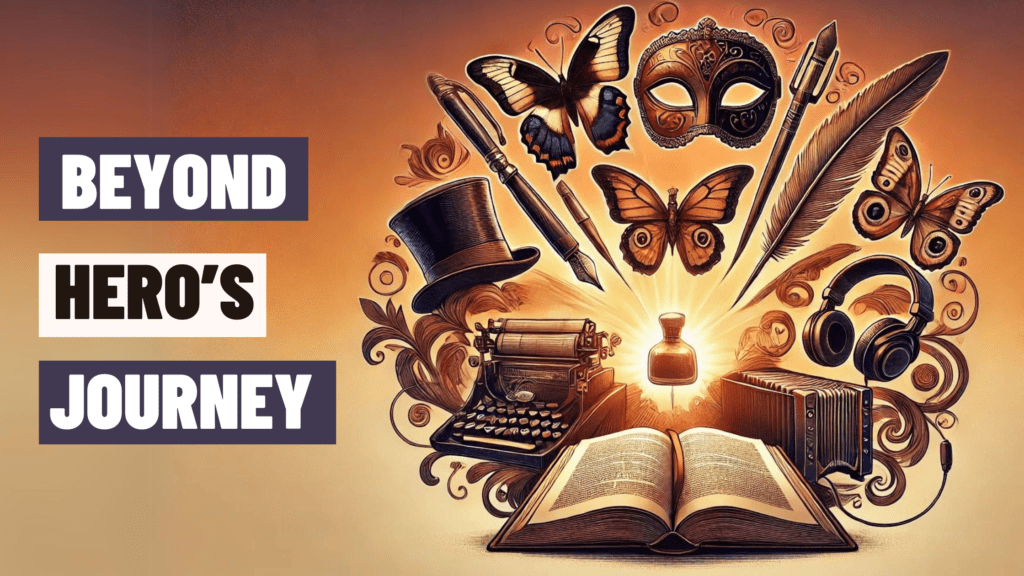
Table of Contents
The Limitations of the Individual Hero
The Hero’s Journey typically focuses on an individual protagonist. However, this emphasis on individual heroism can be problematic when applied universally:
- Western-centric perspective: The Hero’s Journey often reflects Western individualistic values, which aren’t universal and may not resonate with students from more collectivist cultures.
- Overshadowing collective narratives: This framework can overshadow stories that prioritize community or collective action, which are common in many non-Western traditions.
- Potential for cultural imposition: By overemphasizing the Hero’s Journey, we risk inadvertently imposing Western narrative structures on non-Western stories, echoing problematic colonial practices.
- Oversimplification: Complex narratives are often forced to fit the Hero’s Journey template, potentially overlooking unique structural elements.
- Gender bias: The traditional Hero’s Journey often assumes a male protagonist, which can be limiting when analyzing stories with female or non-binary leads.
- Linear progression: Not all stories (and people) follow a linear path of growth and transformation.
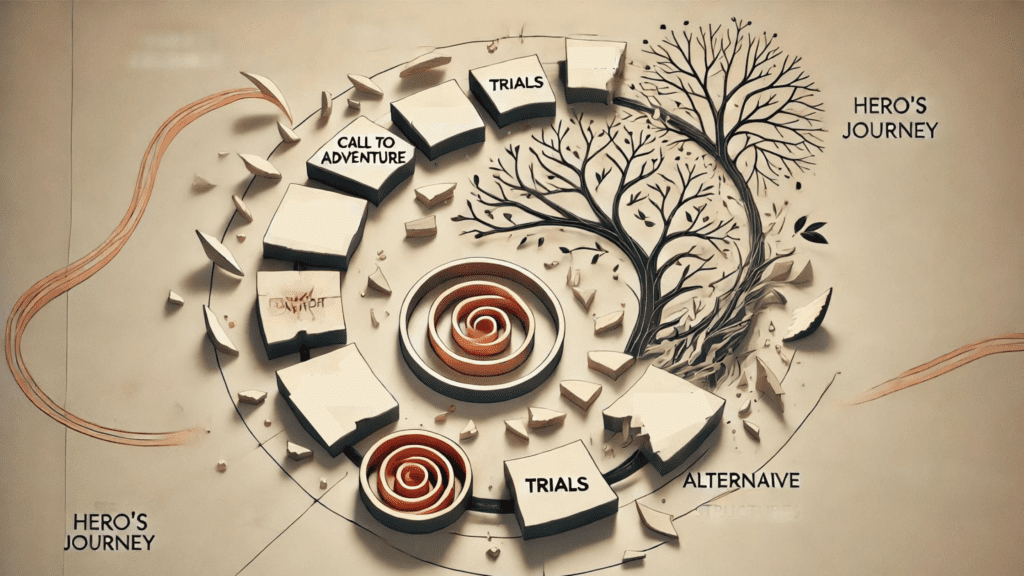
This problem really struck me on my most recent read of Things Fall Apart. Chinua Achebe’s novel provides a powerful critique of this individualistic heroic model. The protagonist, Okonkwo, tragically attempts to fit into a Western heroic mold:
- He shuns community wisdom and ancestral stories, relying instead on a rigid, individualistic “bootstrap” mentality.
- His insistence on going against established community norms is reminiscent of Shakespearean tragic heroes like Macbeth.
- Okonkwo’s downfall serves as a cautionary tale against abandoning collective values for individual heroism.
Achebe’s novel brilliantly illustrates the dangers of imposing Western narratives on non-Western stories. As educators, we must ask ourselves: Are we continuing this imposition by overemphasizing the Hero’s Journey in our teaching?
This critical examination of Okonkwo’s character arc in Things Fall Apart highlights the need for a more nuanced, culturally sensitive approach to narrative analysis. It challenges us to look beyond the individual hero and consider how stories can reflect and reinforce community values, collective action, and diverse cultural perspectives. I found that when I looked at my own curriculum that even though I wholeheartedly agree with “The Danger of a Single Story” that I could do better.
By broadening our analytical toolkit beyond the Hero’s Journey, we can:
- Offer students a more inclusive understanding of narrative structures and storytelling.
- Honor the diversity of storytelling traditions in our increasingly multicultural classrooms.
- Encourage critical thinking about how narrative structures reflect cultural values and worldviews.
- Foster greater creativity in student writing.
- Provide more entry points for students to connect with literature.
Revamping the Curriculum: A Journey Towards Inclusivity
As I’ve been revamping my English curriculum, I’ve found myself grappling with a central question: How can I create a more inclusive, diverse, and engaging learning experience for my students? This led me to reconsider not just the texts we study, but also how we approach narrative analysis itself.
The four works I’ve chosen to highlight in this post – Things Fall Apart by Chinua Achebe, Dracula by Bram Stoker, In the Time of the Butterflies by Julia Alvarez, and Beyoncé’s concept album Cowboy Carter – represent a deliberate effort to diversify our curriculum in terms of:
- Cultural perspectives: From African to Eastern European to Latin American to African American experiences.
- Historical contexts: Spanning pre-colonial Africa, Victorian England, 20th-century Dominican Republic, and contemporary America.
- Narrative structures: Including circular, epistolary, multiple perspective, and concept album formats.
- Media types: Incorporating traditional novels alongside modern musical storytelling.
I’m putting these texts together in a choice storytelling novel unit with Cowboy Carter as the unifying whole-class “text.” The unit is designed to introduce students to a variety of voices and experiences and challenge all of us to think beyond traditional Western narrative structures.
At first this selection seemed a little crazy. This decision was born out of what I have available to me in my book room and was part gut at first, but this selection allows for some really great parallels and contrasts, encouraging students to think critically about how narrative choices reflect and shape cultural values, historical contexts, and thematic explorations.
Let’s look at the texts and possibilities more closely.
Alternative Narrative Structures to Explore
We can find alternative narrative structures in a variety of places, some of these may already be available in our book rooms.
- Collective Journey Narratives: Stories where a community or group is the protagonist. Example: The Grapes of Wrath by John Steinbeck.
- Circular Narratives: Stories that end where they begin, emphasizing cycles rather than linear progression. Example: One Hundred Years of Solitude by Gabriel García Márquez.
- Polyphonic Narratives: Stories told from multiple perspectives, without a single hero. Example: The Joy Luck Club by Amy Tan.
- Episodic Structures: Stories composed of loosely connected incidents rather than a single arc. Example: The House on Mango Street by Sandra Cisneros.
- Antiheroes and Subverted Journeys: Stories that deliberately undermine heroic tropes. Example: Wuthering Heights by Emily Brontë.
- Indigenous Storytelling Structures: Narratives that follow traditional storytelling patterns from various cultures.
Example: Ceremony by Leslie Marmon Silko.
Circular Narrative Structure in Things Fall Apart
Chinua Achebe’s Things Fall Apart provides an excellent example of a circular narrative structure, which is common in many African storytelling traditions. Unlike the linear progression of the Hero’s Journey, a circular narrative often ends where it begins, emphasizing cyclical patterns in life and nature.
Key elements of the circular structure in Things Fall Apart:
- The novel begins and ends with similar situations: a strong man facing personal and cultural crises.
- Recurring motifs and proverbs create a sense of repetition and cycle.
- The fall of Okonkwo mirrors the fall of his culture, creating a layered circularity.
This structure reflects the Igbo worldview, which sees time as cyclical rather than linear. It also reinforces the novel’s themes of tradition, change, and the cyclical nature of history.
Teaching strategies:
- Visual mapping: Have students create a circular diagram of the novel’s events, highlighting recurring elements.
- Comparative analysis: Discuss how the opening and closing scenes mirror each other, and what has changed in between.
- Thematic exploration: Analyze how the circular structure enhances themes of tradition vs. change.

Epistolary and Multi-voiced Structure in Dracula
Bram Stoker’s Dracula employs an epistolary structure, telling its story through a collection of letters, diary entries, and newspaper clippings. This approach creates a multi-voiced narrative that offers unique storytelling possibilities.
Key elements of the epistolary structure in Dracula:
- Multiple narrators provide different perspectives on events.
- The use of documents creates a sense of authenticity and immediacy.
- Gaps in the narrative build suspense and allow for reader speculation.
This structure allows Stoker to build credibility for his fantastic tale while also creating suspense through limited perspectives and gaps in information.
Teaching strategies:
- Character perspective analysis: Examine how different characters interpret the same events.
- Creative writing: Have students create “missing” diary entries or letters to fill narrative gaps.
- Unreliable narration: Discuss how the epistolary format affects the reliability of the narrative.

Concept Album as Narrative in Cowboy Carter
Beyoncé’s Cowboy Carter represents a modern approach to storytelling through the structure of a concept album. This format allows for a non-linear, thematically linked narrative that combines music, lyrics, and visual elements.
Key elements of the concept album structure in Cowboy Carter:
- Song order creates a loose narrative arc.
- Interludes and skits provide context and transitions.
- Musical styles and samples contribute to the storytelling.
- Visual elements (album art, music videos) enhance the narrative.
This structure allows Beyoncé to explore themes of identity, history, and genre-blending in a non-linear, immersive way.
Teaching strategies:
- Playlist analysis: Examine how the order of songs contributes to the overall narrative.
- Multimodal exploration: Discuss how visuals and music videos enhance the album’s storytelling.
- Comparative study: Analyze how transitions between songs function similarly to chapter transitions in novels.
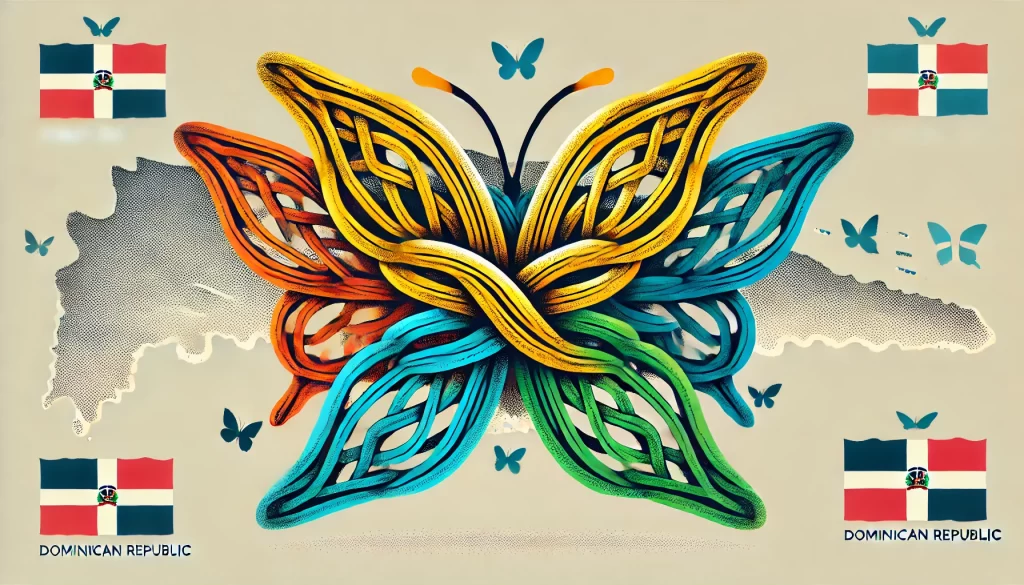
Multiple Perspective Structure in In the Time of the Butterflies
Julia Alvarez’s In the Time of the Butterflies employs a complex, multiple perspective structure that weaves together different timelines and voices. This approach allows Alvarez to create a rich, layered narrative that explores both personal and historical dimensions of the Mirabal sisters’ story.
Key elements of the multiple perspective structure in In the Time of the Butterflies:
- Rotating first-person narratives from each of the four Mirabal sisters
- Alternating timelines, shifting between past events and a present-day frame narrative
- Inclusion of different narrative forms (dialogues, diary entries, letters) within each sister’s account
This structure allows Alvarez to explore the complexity of historical events through personal experiences, showing how individual stories contribute to and are shaped by larger historical narratives.
Teaching strategies:
- Character mapping: Create visual representations of each sister’s storyline, then overlay them to see how they intersect.
- Timeline construction: Build a collective timeline of events, color-coding each sister’s contributions to visualize how their stories interweave.
- Perspective analysis: Examine how the same events are portrayed differently by each sister, discussing the impact of perspective on historical understanding.
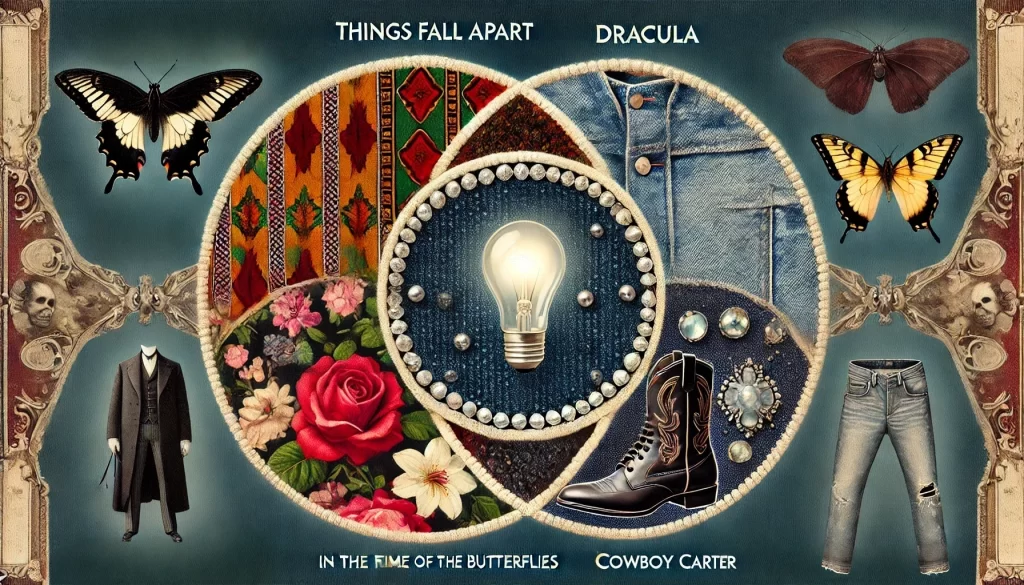
Comparative Analysis
When we examine these three works side by side, we can see how their different structures reflect their cultural origins and enhance their themes:
1. Cultural reflection:
- Things Fall Apart: Circular structure reflects Igbo worldview
- Dracula: Epistolary structure mirrors Victorian fascination with documentation
- Cowboy Carter: Concept album structure represents modern, multi-platform storytelling
2. Treatment of time:
- Things Fall Apart: Cyclical time emphasizes patterns and repetition
- Dracula: Fragmented time creates suspense and uncertainty
- Cowboy Carter: Non-linear time allows for thematic exploration over chronological progression
3. Character development:
- Things Fall Apart: Characters are seen through the lens of community and tradition
- Dracula: Characters develop through their own words and others’ perceptions
- Cowboy Carter: Character (or persona) evolves through musical and stylistic choices
4. Reader/listener engagement:
- Things Fall Apart: Readers connect events across the narrative circle
- Dracula: Readers piece together the story from multiple sources
- Cowboy Carter: Listeners create meaning through repeated, non-linear engagement
5. Narrative voice:
- Things Fall Apart: Third-person narrator with focus on Igbo oral tradition
- Dracula: Multiple first-person accounts through documents
- In the Time of the Butterflies: Rotating first-person narratives from multiple characters
- Cowboy Carter: First-person perspective through lyrics, with additional voices in features and samples
6. Treatment of historical events:
- Things Fall Apart: Fictional events against a historically accurate backdrop
- Dracula: Fictional events with references to historical figures and technologies
- In the Time of the Butterflies: Fictionalized account of real historical figures and events
- Cowboy Carter: Artistic interpretation of historical trends in country music
7. Narrative continuity:
- Things Fall Apart: Continuous narrative with cyclical elements
- Dracula: Fragmented narrative pieced together from various documents
- In the Time of the Butterflies: Interwoven narratives with shifts in time and perspective
- Cowboy Carter: Non-linear narrative connected by thematic elements

Conclusion
Look…I’m not suggesting we abandon the Hero’s Journey entirely. Instead, let’s use it as just one tool among many. By moving beyond the Hero’s Journey and exploring diverse narrative structures, we open up new worlds of analysis and understanding for our students. We demonstrate that there’s no one “correct” way to tell a story, and that narrative structure can be a powerful tool for conveying cultural values, enhancing themes, and engaging audiences.

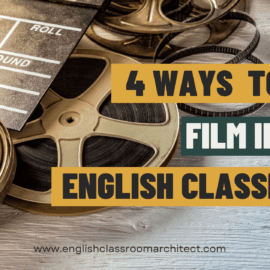


Oh my goodness! This idea is JUST what I needed. I am teaching a “World” Lit class for Sophomores next year, and when I look at the curriculum it is almost entirely British/Western. This post inspired me to do a bit of digging and I found a structure I thought you might like to know about: Kishotenketsu. I am just learning about it, but it is a classic Chinese, Japanese, and Korean narrative structure. Apparently it is used in many Studio Ghibli movies and in a lot of Japanese Manga. I don’t know about your kids, but Manga is one of my students’ favorite genres.
Oh, interesting! I have not heard about it, but you’re right. I’m going to investigate. Thank you for sharing and I’m glad the post resonated with you!